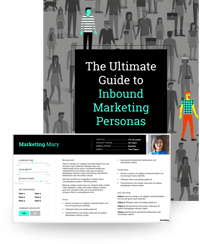.png?width=1180&name=Untitled%20design%20(37).png)
Leadership Lessons from HubSpot's Brian Halligan
September 21, 2015
By Matt Farber

Brian Halligan is one of the co-founders of HubSpot and it's safe to say he has helped revolutionized the way marketers go about their business. With more than 15,000 companies now using HubSpot to increase visits, leads, and customers for their business there are surely a couple lessons we can learn from Mr. Halligan. For the remainder of this post I'll be calling out some of my favorite quotes from Brian Halligan and explain why there are multiple lessons to be learned from a simple sentence.
"You've got to unlearn what you have learned.”
This is a crazy concept for many people and especially marketers. After going to school and learning the ins and outs of the marketing world we have to unlearn what we paid a good amount of money to learn? Why on earth would anyone do that? The answer can be found in two words, things change. More-so things are changing faster than they ever have in the past. With the ability to be more and more connected 24/7 buyers are now able to research all the time and they will make the buying decision when they are ready. It's difficult to justify big budgets on outbound marketing when a majority of the population are staring at their phones all the time.
Even thinking about radio and TV ads... more and more people are listening and watching on-demand with services like Spotify and Netflix taking over the market. Out with the old and in with the new!
“The first method is to think across the traditional boundaries of your marketplace to alternatives, not just competitors.”
I've worked with multiple clients where after explaining this concept it changed the game for their inbound strategy. As part of the buyer's journey we look at three different stages, awareness, consideration, and intent. When looking at the consideration stage it's easy to fall into a trap of comparing your company to a competitor. This comparison should actually be done in the intent stage.
Going back to the quote above it's all about looking at a alternatives to the solution a company offers. Let's use an inbound marketing agency as an example with a prospect having a pain point of attracting more visitors to their website. Thinking about alternatives to hiring an inbound agency to create content things to consider would be a PPC campaign, hiring an inbound marketing specialist internally, hiring an SEO company etc... So it's not looking at company A vs. company B but rather different ways to solve the pain points.
“The second method for creating a winning strategy in the era of inbound marketing is to be the world's best at what you do”
This may seem like a no-brainer but it's going to make an inbound strategy so much more effective. Having the ability to generate case studies and success stories about why you're the best can net in more closed deals and a shorter sales cycle. If you are indeed the best at what you do you should have no problem gathering testimonials to blast all over your site. A successful inbound strategy includes building out content in every stage of the funnel. Awareness content typically comes a little easier to build that consideration and intent, with these last two quotes from Brian Halligan it gives some concrete guidelines to building content out for the bottom half of the buyer's journey.
“Picking the Perfect Keywords”
Here's the thing about keywords, they really are the core of every inbound campaign. The HubSpot keyword tool is a fantastic tool for identifying those perfect keywords. When looking at keywords to target I typically look at three factors: number of monthly searches, difficulty to rank, and our current rank for that keyword. A perfect keyword would be one that has one million monthly searches with a difficult of 1 (the difficulty scale ranges from 1-99 with 1 being the easiest and 99 being the most difficult). This scenario will never play out but the idea is to look for a keyword with monthly searches and a low difficulty score. This will drive more organic search to your site faster and should result in a higher conversion rate if the site is optimized correctly.
There you have it, four quotes I love from Brian Halligan. Do you have any lessons to share that you've learned from Mr. Halligan?

About the author
Matt Farber was formerly an Inbound Marketing Consultant for SmartBug Media. Using his project management and inbound marketing experience in the B2B sector Matt helps clients build and implement their inbound marketing strategies to grow leads, conversion and revenue. Read more articles by Matt Farber.






-2.png?width=800&length=800&name=Blog%20header%20image%20(1)-2.png)